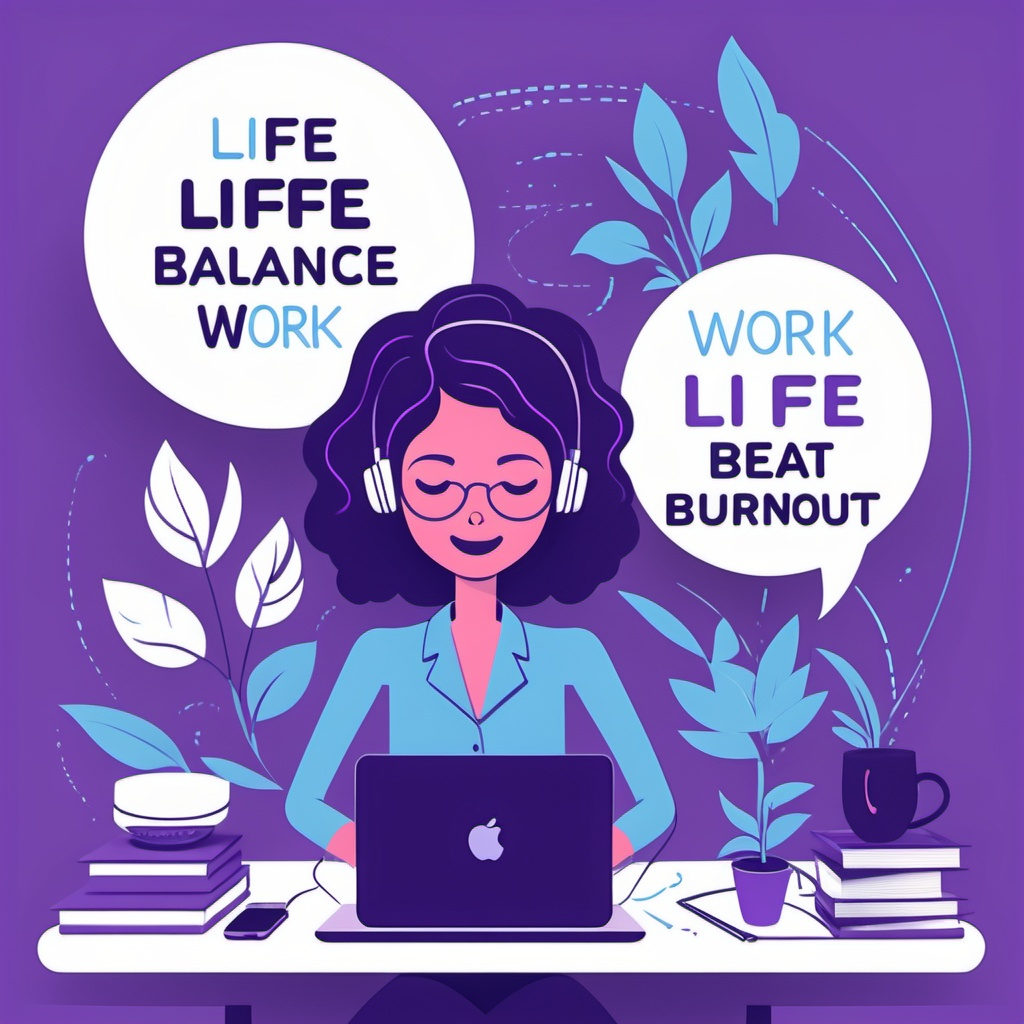Beat Burnout: Practical Tips for Sustainable Work-Life Balance

In the current world, the line between work and personal life often blurs, leading many to experience burnout. This state of chronic stress not only affects productivity but also takes a toll on mental and physical health. However, achieving a sustainable work-life balance is possible with the right strategies. Let’s explore how you can transition from burnout to balance and create a healthier work environment.
Understanding Burnout: The Silent Epidemic
Burnout is more than just feeling tired; it’s a state of emotional, physical, and mental exhaustion caused by prolonged stress. Symptoms can include:
–Chronic fatigue: Feeling drained and unable to cope.
–Detachment: A sense of disconnection from work and colleagues.
–Reduced performance: Decreased efficiency and productivity.
Recognizing these signs early is crucial. If you find yourself in this cycle, it’s time to take action.
The Importance of Work-Life Balance
Achieving work-life balance is essential for long-term success and well-being. It allows you to:
–Enhance productivity: A balanced approach leads to greater focus and creativity.
–Improve mental health: Reducing stress levels can prevent anxiety and depression.
–Foster relationships: Quality time with family and friends enriches your life outside of work.
Strategies for Sustainable Work Practices
- Set Boundaries
Establish clear boundaries between work and personal life. Here’s how:
–Designate work hours: Stick to a schedule that allows for dedicated work time while ensuring you have time for personal activities.
–Create a workspace: If working from home, set up a specific area that signals when you are “at work” versus “off duty.” - Prioritize Self-Care
Self-care is not a luxury; it’s a necessity. Incorporate these practices into your routine:
–Physical activity: Regular exercise boosts mood and energy levels.
–Mindfulness practices: Techniques like meditation or deep-breathing exercises can help reduce stress.
–Adequate sleep: Prioritize sleep hygiene to ensure restorative rest. - Embrace Flexibility
Flexibility in your work schedule can significantly reduce stress:
–Remote work options: If possible, negotiate remote or hybrid working arrangements that suit your lifestyle.
–Flexible hours: Discuss with your employer the possibility of adjusting your hours to fit your peak productivity times. - Learn to Say No
Overcommitting can lead to burnout. Practice saying no by:
–Assessing your workload: Before taking on new tasks, evaluate your current commitments.
–Setting realistic goals: Break projects into manageable tasks and don’t hesitate to decline additional responsibilities if they jeopardize your balance. - Foster a Supportive Work Environment
A positive workplace culture can make all the difference:
–Communicate openly: Share your feelings about workload with supervisors and colleagues.
–Encourage team bonding: Participate in or organize team-building activities that foster camaraderie and support.
Conclusion: Your Journey Towards Balance
Transitioning from burnout to balance is not an overnight process; it requires commitment and self-awareness. By implementing these strategies, you can cultivate sustainable work practices that enhance both your professional performance and personal well-being.
Remember, achieving balance is an ongoing journey. Regularly reassess your strategies and adjust them as necessary. With determination and the right approaches, you can create a fulfilling work life that nourishes rather than depletes you. Embrace this journey—your future self will thank you!
References
Work-Life Balance Is a Cycle, Not an Achievement
Work-life balance -a systematic review | Emerald Insight
Frontiers | Work-Life Balance, Job Satisfaction, and Job Performance of SMEs Employees: The Moderating Role of Family-Supportive Supervisor Behaviors
Work-Life Balance: Weighing the Importance of Work-Family and Work–Health Balance – PMC









